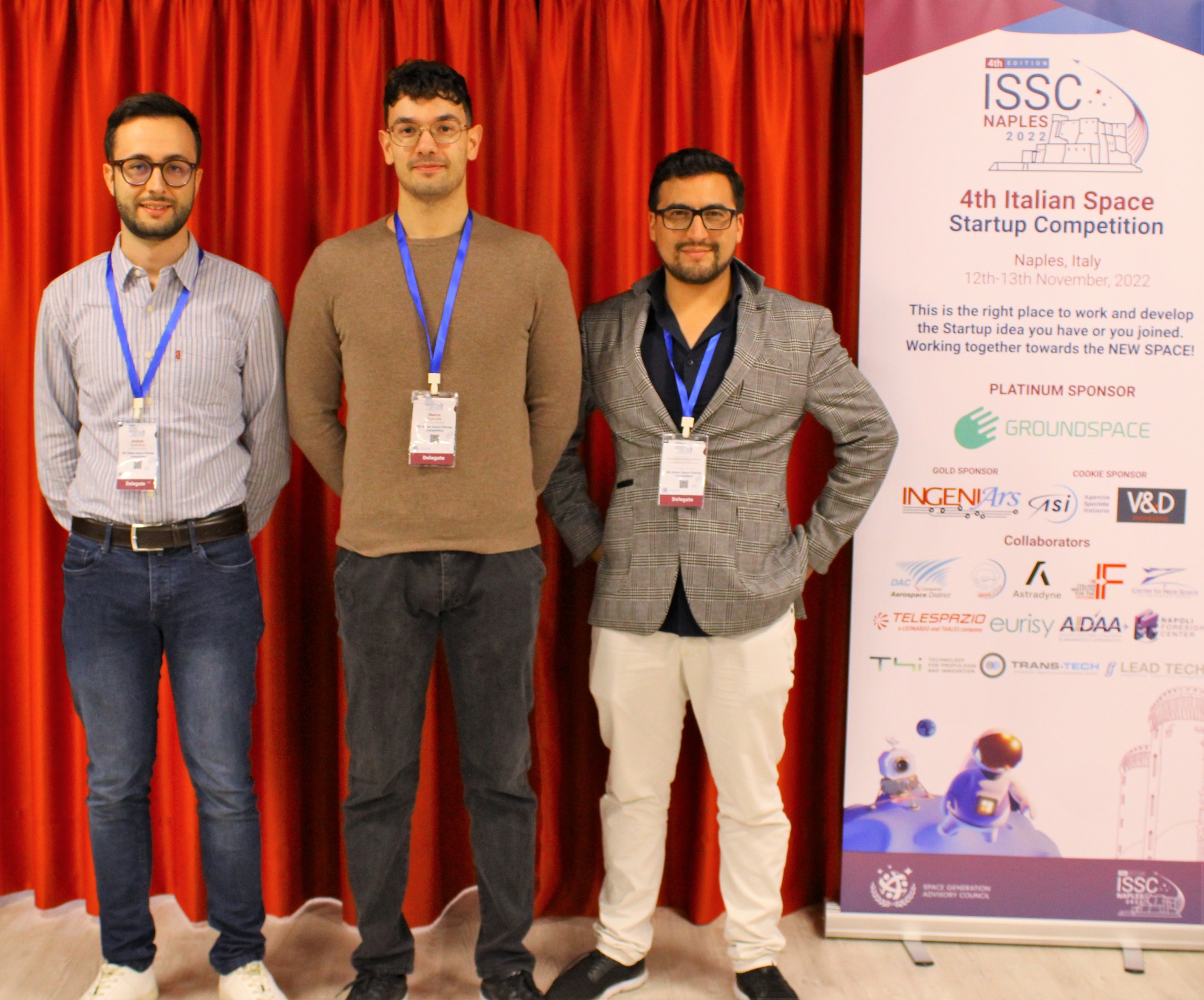4th ISSC Winning Teams
SIO (Security In Orbit)

SIO was founded as a start-up focused on the safety and reliability of space systems through the design and realization of black boxes for satellites: they are intended as on-board equipped isolated systems capable of autonomously powering themselves, performing storage of system status and sensitive payload data, and safely communicating with ground stations.
“Pulse” and “Solid” are the two types of models proposed, capable of meeting the different needs of the market: the former for microsatellite applications, which is more compact and economical, and the latter for defense satellite applications, thanks to the use of quantum communication channel and casing with built-in shielding.
Team Members: Gabriele Di Natale, Alessia Finizio, Giuseppe Puleo
Space Sleep Walkers

The Space Sleep Walkers team has focused on solving problems related to human health in microgravity. In particular, one of the major problems is reduced bone density, which can cause osteoporosis and a depletion of calcium and phosphate reserves.
The solution proposed by the start-up company is a mechatronic system capable of stimulating the long bones of the lower limbs in a passive manner, so as to allow humans to stay longer in space.
Team Members: Armando Nicolella, Leonard Carl Luigi Lidgard, Pierangelo Malfi, Luca Borriello
LIFT (Low orbit Integreted few Fuel Thruster)

The “Low orbit Integrated Few fuel Thruster” is a research project working on the realization of a rocket based combined cycle engine. This engine combines the best performance characteristics of air-breathing systems (such as ramjets and scramjets) with rockets. The goal of this system is to increase payload/structure and propellant performance, thus making Low Earth Orbit (LEO) more accessible. The possible customers would be future suborbital flight companies and future military programs.
Team Members: Gabriele Mignacca, Emanuele Papapietro, Gian Marco Volpari
Space Walkers

We are going back to the moon, this time to stay, that’s why NASA is developing the In Situ Resource Utilization program (ISRU), but …where exactly are this resources located? We will find them with A.N.T.S, our Anti-impact Non-stopping Transmitters System, a project inspired in biology where picco-rovers equipped by LiDAR, Sonar, Spectrometer, accelerometers and other sensors will map accurately the environment and send all the data to the queen nested in the hive, a powerful computer protected for radiation that will clean and prepare the data and send it to a nearby lunar module. The ants are design to be fast, agile, easy fixable and nearly unstoppable by a flexible 4 wheel with a body that can go in any direction, also equipped with unsupervised learning IA so they can be fully autonomous, and flexible to achieve almost every mission on there own with no external help.
Team Members: David Augusto Galvan Alvarado, Andrea Scardino, Marco Pascale



